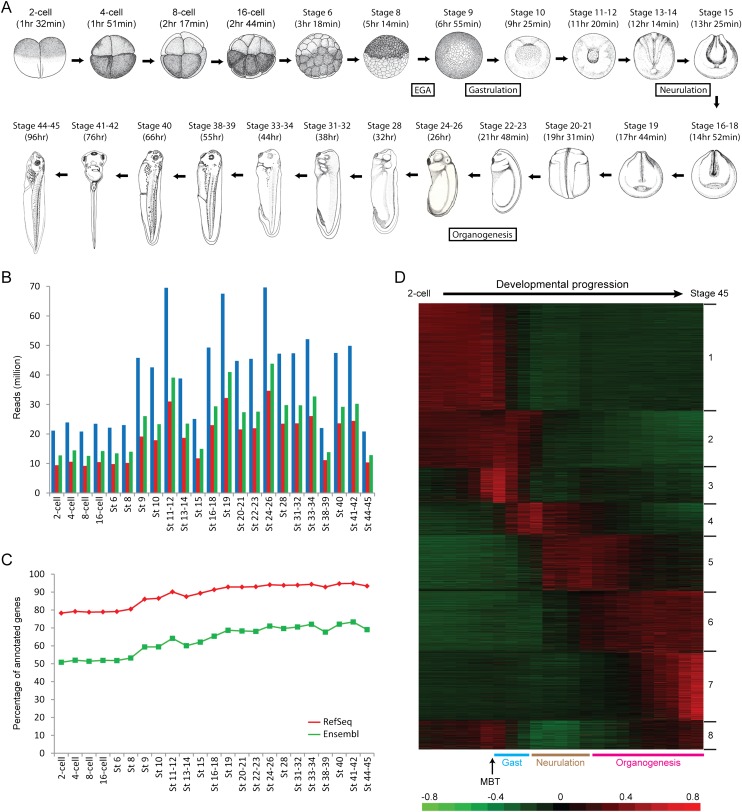Figure 1.
Deep RNA-seq covers the majority of annotated genes and reveals dynamic temporal regulation over development. (A) The developmental stages (adapted from Nieuwkoop and Faber 1994 and reprinted with permission from Garland Science/Taylor & Francis LLC © 1994) investigated in this study. For each stage, the approximate time of occurrence after fertilization is given in brackets and is estimated from Khokha et al. (2002) or Xenbase. The beginnings of four major developmental events—embryonic genome activation (EGA), gastrulation, neurulation, and organogenesis—are also indicated in the schematic. (B) Number of sequencing reads for each of the stages. (Blue) Total number of reads; (red) number of reads that mapped to RefSeq genes; (green) number of reads that mapped to Ensembl genes. (C) Number of annotated genes that were detected at each of the stages. (Red) RefSeq genes; (green) Ensembl genes. (D) Clustered expression profiles for all detected RefSeq genes are organized by time of expression. The RPKM values were mean-centered and normalized, with each row representing a different gene. The key developmental events, namely the midblastula transition (MBT), gastrulation (Gast), neurulation, and organogenesis, are also labeled below the heatmap. The first cluster contains the set of genes whose RNAs are present at high levels in the earliest stages of development until after the embryonic genome is activated. The second cluster contains the set of transcripts that are present not only before the midblastula transition but remain expressed until the end of gastrulation. The third cluster corresponds to the early response genes that are first transcribed around the midblastula transition. The fourth cluster represents the cohort of genes that are expressed during gastrulation and neurulation, while the fifth cluster represents genes that are expressed not only during neurulation but also during early organogenesis. The sixth cluster contains the set of genes that are first transcribed at the onset of organogenesis and whose expression remains on throughout all the tadpole stages. The seventh cluster represents genes that are transcribed only at later tadpole stages. Finally, the eighth cluster contains genes that are expressed in the earliest developmental stages, repressed after the midblastula transition, and transcribed again in the late tadpole stages. Taken together, clustering analysis reveals interesting dynamics of transcript levels during Xenopus development.

